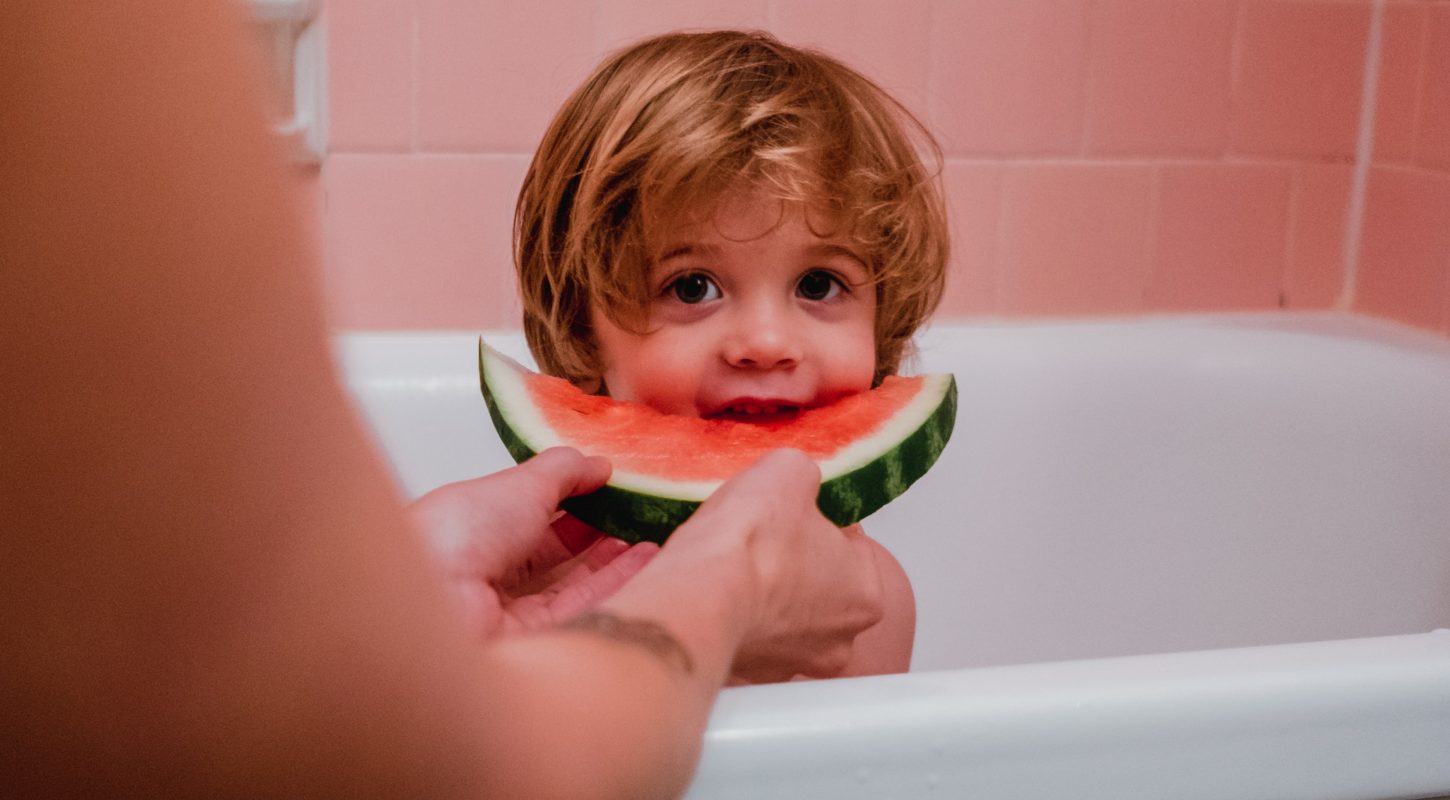Should your kid eat a plant-based diet? Is it healthy? Here’s what you need to know.
Plant-centered diets that feature vegetables, fruits, whole grains, legumes, nuts, and seeds have long been known to promote health and stave off chronic diseases (diabetes, hypertension, heart disease, etc.) that account for the majority of both morbidity and mortality in the United States. Additionally, we know that factory farming takes a devastating toll on the environment, the workers in animal processing facilities, and the nearly 10 billion farm animals slaughtered for food each year in the United States.
As a pediatrician and mother of two, I know that the choices we make around food can have a tremendous impact on our health and issues related to climate change and animal cruelty. With the world changed dramatically from the global pandemic to social justice movements calling for action, we are all in search of tangible, practical ways to display our values. A plant-centered diet can help to address many of these global issues, but for some families, the idea of transitioning to a more plant-centered diet feels overwhelming, if not impossible.
Parents in particular, may worry that their children will resist changes that show up in their lunchbox, at snack time, and at the dinner table, especially if they have older children that are used to typical “kid” foods such as nuggets, hot dogs, and pepperoni pizza. But parents can feel reassured knowing that shifting their family’s diet towards plants does not have to be burdensome. In fact, it can be a journey filled with joy, adventure, purpose, and of course, delicious food.
In making the transition for my own family, I found that an inviting, caring, and gentle approach helped to mitigate conflict and stress. I did my best to persuade them with one of the best tools in my armament: the food. With a little bit of care but not too much extra fuss or work, I began making fully plant-based meals at home. I actively sought my family’s feedback and worked to prepare delicious, nutritious meals we could all enjoy. The single, most effective action I took to shift my family towards a plant-based diet was to cook good food. You hardly notice what you are missing when the plate in front of you makes your mouth water. I did my best to prepare and cook real, whole-plant foods for my family. This is not to say that every meal was greeted with joy and excitement. Yet, more often than not, day in and day out, it worked.
If your family seems interested, or even curious, the next step can be to try out a few changes. Let them know you are experimenting and eager for their feedback and input. This can reassure them that how they feel genuinely matters to you. Food is meant to not only nourish our bodies but to connect us to those we love and care about. While adopting an attitude of inviting instead of imposing may take longer, such an approach offers more lasting and meaningful change and helps to preserve a loving connection to your family. Here are some steps that you can take to begin the process in your own family.
- Eat more plants. This sounds simple but merely increasing the amount of plant foods you eat will necessarily crowd out animal foods. Add a salad, side of beans, or handful of nuts to your regular meals and snacks.
- Start with what’s already working and build in gradual change. This is the lowest-hanging fruit. The reality is that most families already include a variety of abundant plant-based foods (e.g. pasta with marinara sauce, rice and beans, oatmeal, and even a peanut butter and jelly sandwich) in their diets. If your family already enjoys a few veg-friendly meals try offering them more often.
- Make easy swaps. My family was pretty open to swapping out plant-based milks such soy, almond, and oat (so many wonderful varieties to choose from!) for cow’s milk and hardly noticed egg replacements (such as flax or chia seed “eggs” – one tablespoon of seed mixed with 3 tablespoons of water and let sit for 5 to 10 minutes) in baking. Work to build in change gradually by swapping out animal-based foods with plant-based alternatives. Today’s market has so many delicious plant-based alternatives that are becoming more widely available (even “eggs” made of mung beans!) that eating more plant foods doesn’t mean you have to give up familiar, delicious meals. Some simple ideas include: Tofu scramble with veggies in place of bacon and eggs for breakfast. Hummus and veggie pita in the lunchbox instead of ham and cheese. Bean and veggie burritos instead of beef burritos. Tofu instead of chicken in your stir fry.
- Consider shifting animal products from the main dish to side dish. If the idea of eating an entirely vegan diet seems impossible, aim for 80 or 90%. Whether it’s meatless Monday, tofu Tuesday, or vegan before six, reducing animal foods in the diet is a step in the right direction. The food at home is the simplest place to start. If a gradual approach better serves your family, you can first focus on making changes at home and worry less about what happens outside of your home.
- Try transition foods. Transition foods are typically thought of as somewhat (from minimally to heavily) processed foods meant to replace animal-based foods such as meat, dairy, eggs, and fish. Examples might include soymilk, plant-based nuggets, vegan cheese, and veggie burgers. Products differ widely in terms of the degree to which they are processed. In general, the less processed a food is, the more wholesome and healthier it tends to be, but in some instances, processing can actually be beneficial. For example, many plant-based milks are fortified with vitamins D and B12 and many veggie “meats” provide high quality, absorbable protein as well as added iron and B12. These transition type foods may serve as occasional foods or become everyday staples in your family’s diet. They can be especially useful when families are just beginning to make the shift, when eating out, or when attending functions such as a family barbecue. These foods can also add a degree of convenience during busy weekdays.
- Engage and encourage. Involve kids in food selection and preparation. Grow some vegetables or herbs; let your child select fruits and vegetables at the market; encourage your child to help count, measure, sift, stir, pour, or brush. The more they are involved, the more likely kids are to try new foods.
- Have a sense of adventure. Try new recipes (there are a plethora of vegan/plant-based blogs, Instagram accounts, and cookbooks) and explore new cuisines. Many ethnic foods (e.g., Ethiopian, Indian, Middle Eastern, Thai) are heavily plant-centered and vegan-friendly.
- Be a role model. Children learn by what they see. We don’t need to have complicated conversations about nutrition with our children. When kids see parents enjoying crisp snap peas or slurping a juicy mango, they are more likely to want to try it themselves.
- Try not to be sneaky. No one likes to be tricked. The few leaves of kale you covertly mixed into their morning smoothing could backfire. If little ones detect bitterness or a less sweet version of their favorite smoothie, they will learn to distrust your offerings. A different approach could be: “I’ve added a secret ingredient, and I’m wondering if you can figure out what is,” or allow them to throw in as many leaves of spinach as they would like and gradually work your way up. When you “sneak” things in, you may inadvertently be teaching your kids that these foods are not enjoyable.
- Make it fun and be creative. Use fun shapes, an assortment of colors, and a sense of playfulness to make food appealing to little ones. Additionally, turning anything into a “bar” (i.e., salad, taco, rice bowls, etc.) is great way to get kids to try new ingredients or combinations. It also gives them some control over the meal by allowing them to add which and how much of each ingredient they want to try.
- Be a good listener. If your child really dislikes something, be willing to hear them out and offer a reasonable substitute. This is not about being a short-order cook, but if there is something you can do that makes the meal more enjoyable, go for it! One of my kids really dislikes warm or sautéed snap peas. So, when I make a stir-fry, I try to set aside a handful of snap peas so that he can enjoy them raw.
- Provide structure, warmth, and support. Avoid pushing, bribing, sneaking, restricting, and bargaining. Center the focus of mealtimes around enjoyment.
- Focus on the journey. As important as it is to fuel our families with nutritious foods, we have an even greater responsibility as parents to teach our kids how to feed themselves when they are away from our dinner tables. Pushing one more bite of greens or two more bites of anything is not the end goal. Don’t forget that food and family meals connect us. Yes, food should be nutritious. But it should also be delicious and most definitely shared. It’s not always easy to do, but when we focus more on the conversation than the number of bites of broccoli, everyone feels more relaxed.
- Be kind to yourself and have patience. We are all just learning, experimenting, and growing.
In the end, we, as parents, are doing the very best we can for ourselves and our families. If you feel overwhelmed, consider revisiting your “why” and adjusting your pace. Look for support, involve your family, and focus on progress over any illusion of perfection. Move forward with love, compassion, and a generous dose of patience.
Reshma Shah, M.D, M.P.H. is a board-certified pediatrician and affiliate clinical instructor at Stanford University School of Medicine. She is the co-author of the upcoming book, Nourish: The Definitive Plant-Based Nutrition Guide for Families due out November 2020. You can find her on Instagram @reshmashah




